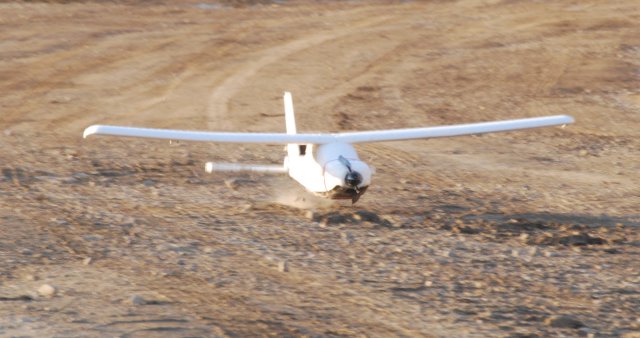recently held a training session on the camera equipped “Sirius” unmanned aircraft system (UAS) for its clients in Walldorf near Heidelberg. MAVinci makes UAS with a wingspan of 1.6 metres (5.3 feet) that take aerial images for land surveys conducted for infrastructure projects, mines or applications in the building industry.
According to the European Commission, there are more than 400 projects across 20 European countries to develop civil unmanned aircraft systems (UAS) ranging from some weighing just a few grammes to others the size of an Airbus A320 jet.
More than 80 percent of the companies working on these projects are small and medium-sized businesses or start-ups.
“The market is growing very rapidly, especially this year,” Johanna Claussen, Chief Executive of one such company, German manufacturer MAVinci, told Reuters.
MAVinci, based in Leimen near Heidelberg, makes UAS with a wingspan of 1.6 metres (5.3 feet) that take aerial images for land surveys conducted for infrastructure projects, mines or applications in the building industry.
“The market holds huge potential, and we can’t even make as many systems as our customers would like to buy,” Claussen said.
 Aviation and aerospace industry research firm Teal Group has estimated that annual spending on UAS around the world will almost double to $11.4 billion by 2022.
Aviation and aerospace industry research firm Teal Group has estimated that annual spending on UAS around the world will almost double to $11.4 billion by 2022.
Almost all the money is currently still going toward military applications, but the European Commission says it is highly likely that a real market for civil applications will emerge over the next decade.
For that to happen, though, legislation will need to be developed dictating how, where and when UAS are allowed to fly in public airspace, and advocates of the new technology still face concerns over safety and privacy.
U.S. lawmaker Rick Larsen, a Democrat from the state of Washington, said privacy concerns continued to surface, even in states like his that are closely tied to the aerospace industry, and needed to be addressed head on.
“Local law enforcement, state and federal government as well as the companies involved do have a responsibility to explain how they see the balance between the privacy issues that we have and the use of unmanned aerial systems. That is what is going to make this happen,” Larsen told Reuters at the Paris Airshow.
UAS come in two basic shapes, those that look like cockpit-less airplanes – such as the ones made by MAVinci – and those that have helicopter-like rotor blades allowing them to hover and take off and land in restricted spaces.
“The possibilities are limitless,” said Stefan Eichhorn, sales chief of Munich-based Ascending Technologies, which makes multi-rotor UAS for aerial photography and video. His company’s flagship model, the AscTec Falcon 8, starts around 18,000 euros.
Some even hope UAS will revolutionise air travel. French university Ecole Polytechynique Federale de Lausanne is presenting an idea at the Paris Airshow for a wing-shaped UAS to which several capsules that look like rail cars could be attached to carry passengers.
“My grand-father would never get in an elevator unless there was an operator in it. But today you and I would take an elevator and would not think twice about it,” said Tom Captain, Global Aerospace & Defense Sector Leader at consultancy Deloitte Touche Tohmatsu Limited.
“The same goes for flying. People say, ‘I’m not getting in the airplane if there is no pilot’. The truth is many flights are run by computers anyway, with automated take-off and landing.”
Source: Reuters
